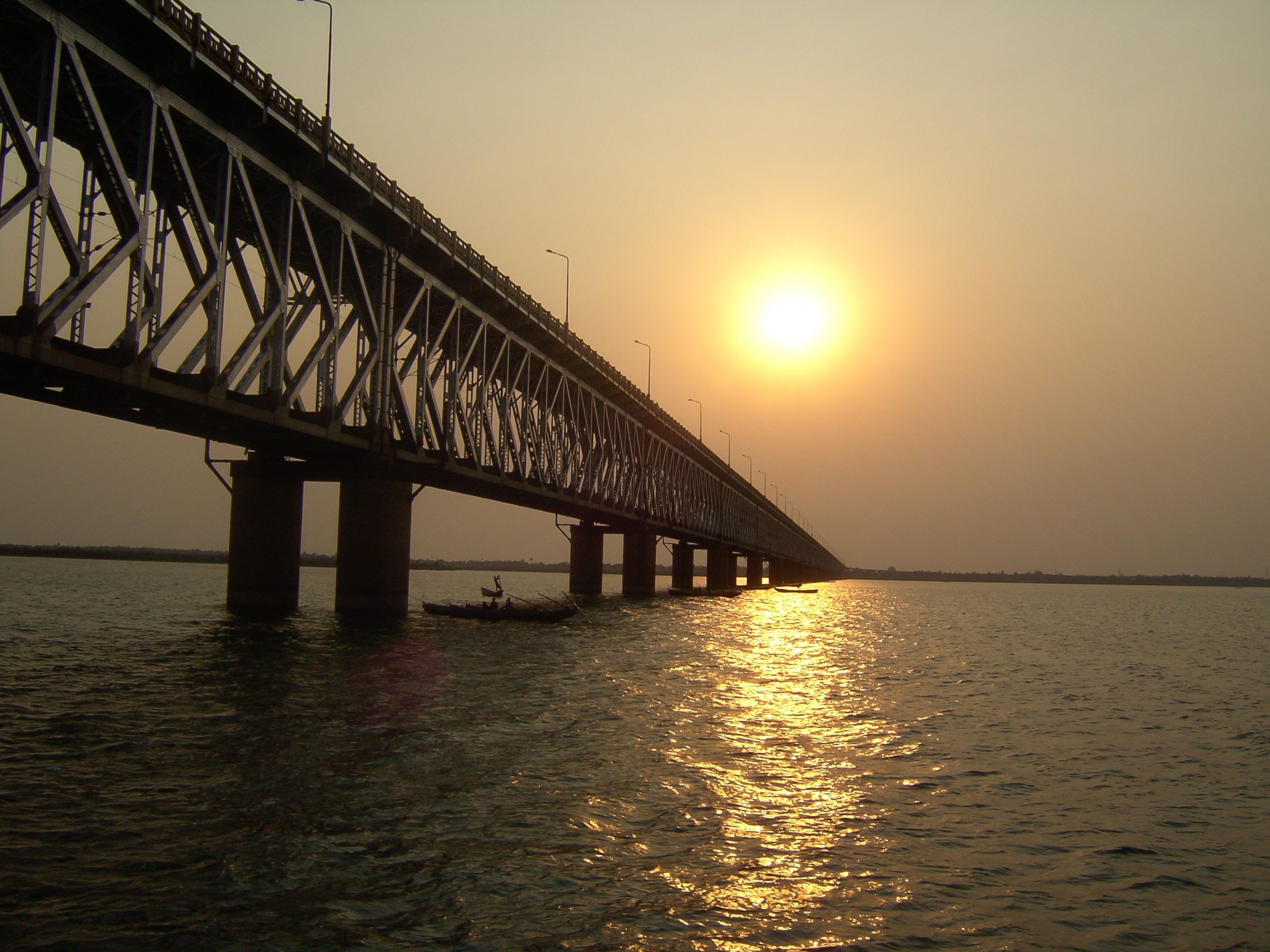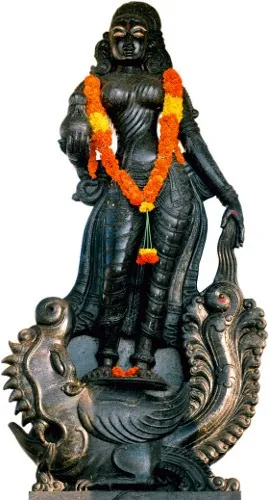River Godavari

Religious Significance
Godavari is one of the most sacred rivers of India. Every twelve years, Pushkaram fair is held on its banks of the river. Thousands of people have a holy dip in the sacred waters of the river to purify themselves of all their sins.
Legend has it that Sage Gautama lived on the Brahmagiri Hills at Triambakeshwar with his wife Ahalya. The rishi kept his stock of rice in a granary. Once, a cow entered his granary and ate up the rice. When the rishi tried to ward the cow away with Durbha grass, it fell dead. The rishi wanted to relieve himself of the sin of ‘Gohatya’. He worshipped Lord Shiva and requested him to bring Ganga to purify his hermitage. Lord Shiva pleased with the rishi appeared as Triambaka and brought along river Ganga. Since Ganga was brought down to Triambakeshwar by Sage Gautama, she is known here as Gautami. She is also known as Godavari because the river helped Sage Gautama to releive of his sins.
Triambaka and brought along Ganga. Since Ganga was brought down to Triambakeshwar by Sage Gautama, she is known here as Gautami. It is also known as Godavari because the river helped Sage Gautama to releive of his sins.

Ecological Significance
The Coringa mangrove forests in the Godavari delta are the second largest mangrove formation in the country. Part of this has been declared as the Coringa Wildlife Sanctuary, renowned for its reptiles. They also provide an important habitat to a wide variety of fish and crustaceans. These forests also act as barriers against cyclones, tropical stroms and tidal waves thus protecting the nearby villages.
The Godavari-Krishna basin is one of the main nesting sites of the endangered Olive Ridley turtle.



Place of Origin: Triambakeshwar (Nasik District), Maharashtra
Length: 1450 km
Confluence:Bay of Bengal, Dhaulekharam (Andhra Pradesh)